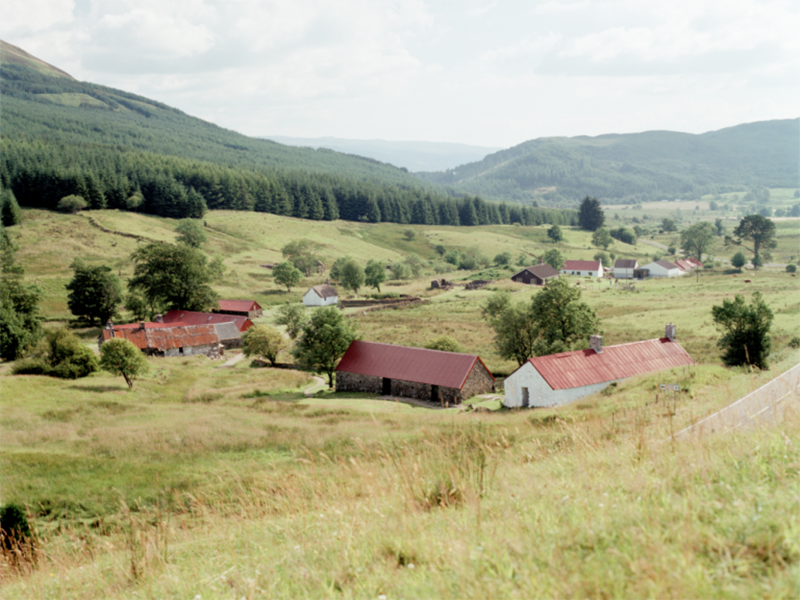Running parallel with the Royal Commission Inventories was scholarly research into Highland folk life, such as that carried out by Sandy Fenton (1976; reprinted 1999), Horace Fairhurst (1960, 1963), Isabel Grant (1961; reprinted 1995, 2007), Eric Cregeen (1959, 1963, 1964, 1970) and Donald Meek (1995). Much of this work is relevant to Argyll. Rural settlement studies in Argyll, in particular, were led by Sinclair (1953) and Gailey (1960; 1962a, 1962b) and Bil’s work on shielings is also relevant (Bil 1990). The School of Scottish Studies has been particularly productive as its archives are now over 60 years old and contain the results of their collection and archiving of material relating to the cultural life, folklore and traditional arts of Scotland and in particular contains numerous oral histories collected on Tiree.
As the 20th century progressed, the work of historians and geographers has increasingly contributed to our understanding of the archaeology especially of capitalism, rural settlement and the Clearances in the early modern period. Notable sources include the work of Dodgshon (1980; 1988; 1993; 1998), Devine (1994; 1999) and Macinnes (1996; 1998). Particular themes in Scottish history have been the subject of research, such as Stevenson’s book on Alasdair MacColla’s invasion of Argyll in the 17th century (1980) and Phillipson and Mitchison’s Scotland in the Age of Improvement (1970).
Clan histories have long been of interest and by the late 20th century some researchers were undertaking original research such as that on the family archives of the Mactavishes of Dunardry (Bradford 1991). Sources included old photographs and letters which revealed their colonial links to Jamaica and with emigrants to Canada and to the USA. There have been several books published on the history of Argyll from the clans’ point of view, including A History of Clan Campbell, Volume 3, From the Restoration to the Present Day (Campbell 2004). Other books on the history of Argyll include Argyll 1730-1850 by Robert McGeachy (2005); Marion Pallister’s Lost Argyll (2005) and Argyll Land of Blood and Beauty by Mary McGrigor with photographs by Gordon Ross Thomson (2000). Also published is Argyll and Bute: The Buildings of Scotland by Frank Arneil Walker (Buildings of Scotland Trust 2000). The Argyll Book (Ormand 2004) utilises a themed approach by a range of authors and includes a chapter on rural settlement (from an archaeological viewpoint by the late Alex Morrison who had done so much work at Auchindrain Township (CANMORE ID 23412) (see Auchindrain: Case Study). There are also chapters on industries, modern Argyll, oral traditions and folklore, Gaelic language and Literature, place-names of Argyll, and communications. Lost Argyll: Argyll’s Lost Heritage is a review of many different types of sites including the gunpowder mills, and is a reminder that much of Argyll’s architectural heritage from the 19th century has already been destroyed (Pallister 2005).
Recent local histories such as Islay, Jura and Colonsay by David Caldwell (2001) provide an excellent overview of the islands including a list of post-medieval sites on the islands (including fortifications, dwelling houses and shielings), early modern sites (farmsteads, estate houses, working farms, villages, industrial sites) and modern and miscellaneous sites. Another excellent interdisciplinary work is The Secret Island: Towards a History of Tiree by the Islands Book Trust (2014). While these two books are not advertised as archaeology books as such, they reference the physical remains and are essential reading for any archaeology project in these areas.
Local amateur archaeologist Allan Begg researched and published his work on the deserted settlements of two parishes; Kilmartin (in 1999) and Glassary (in 2002). His books are a delightful ‘journal of personal observation’ which contained photographs, rentals, stories and living memories of the occupants of the deserted settlements in these two parishes. These works are particularly useful for researchers as they provide a level of local knowledge, although they lack grid references for the sites discussed. Local museums, often run by local charities, societies and volunteers, are important repositories of artefacts, photographs and oral histories relevant to the early modern period eg Auchindrain Township, Inveraray Jail, An Iodhlann (Tiree) or provide an online archive of material for example, Arrochar, Tarbet and Ardlui Heritage Group.
Read the related case study Case Study 15: Auchindrain Township

